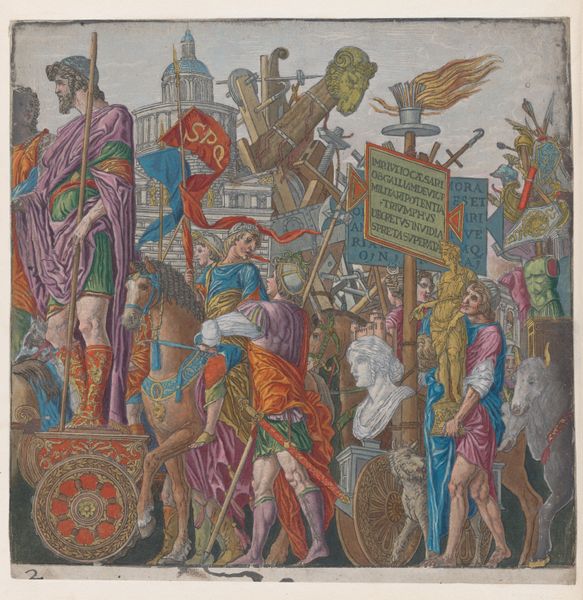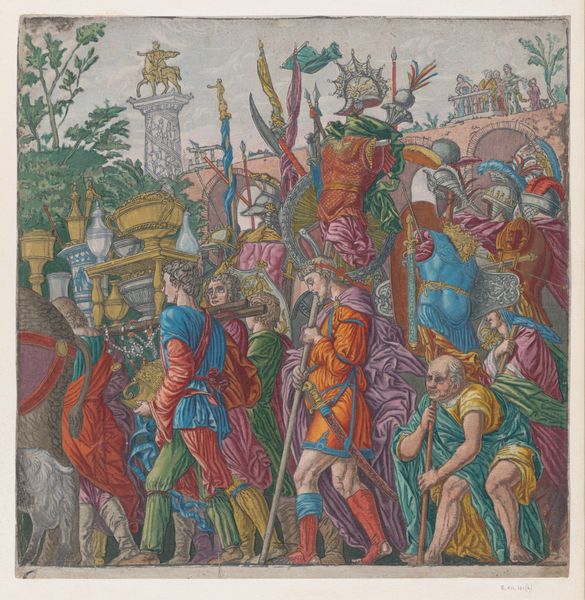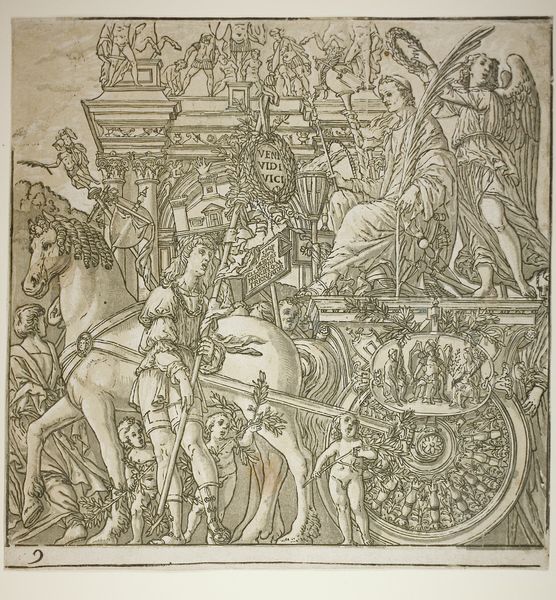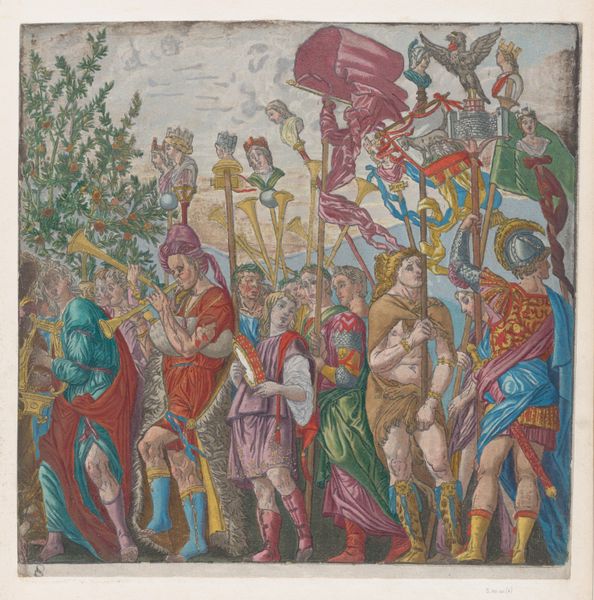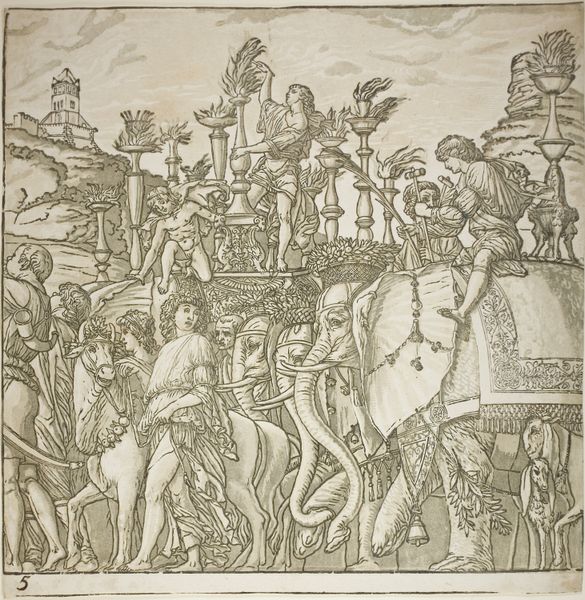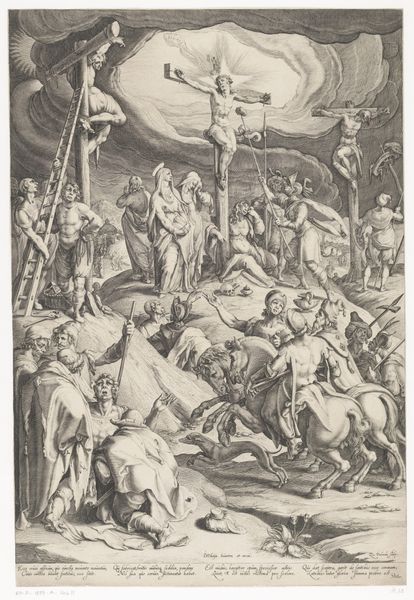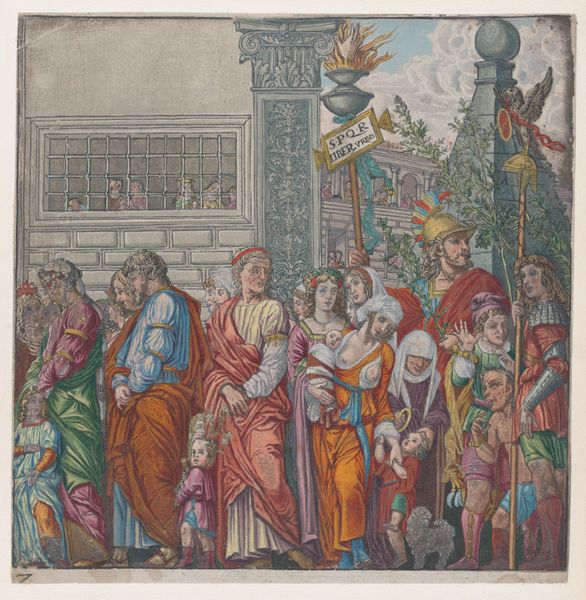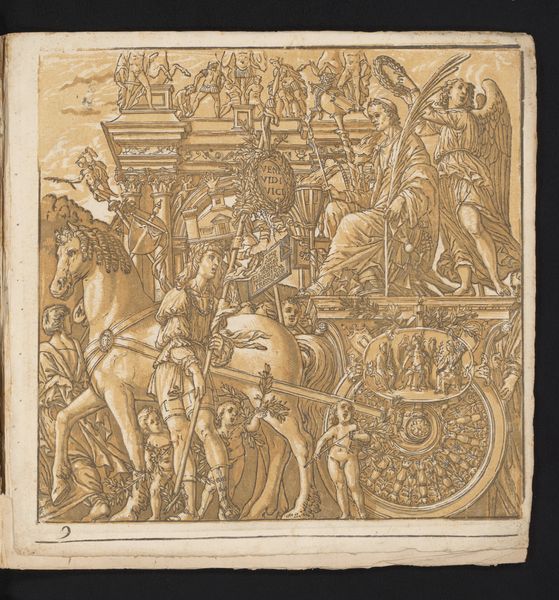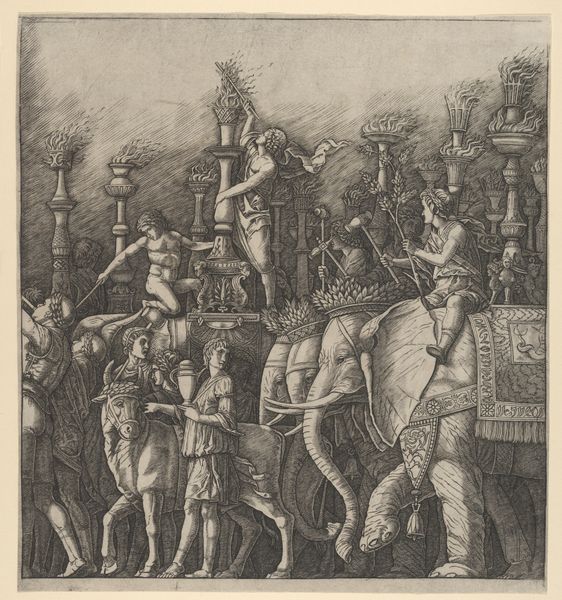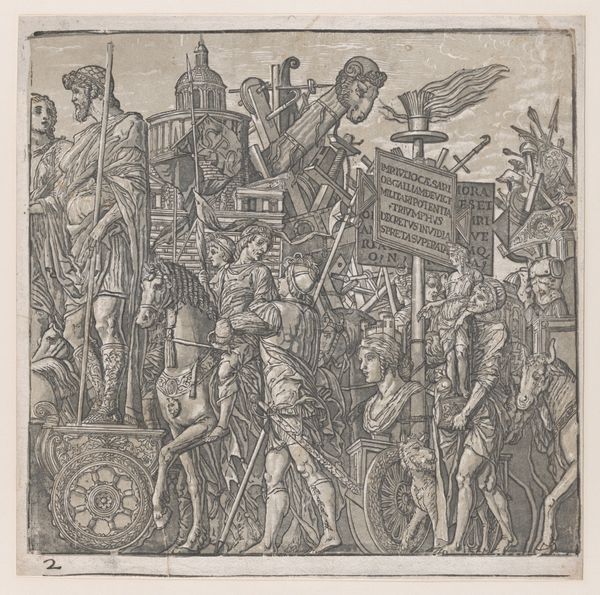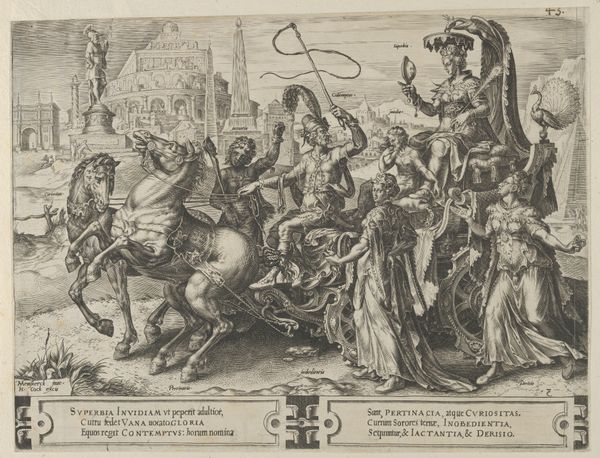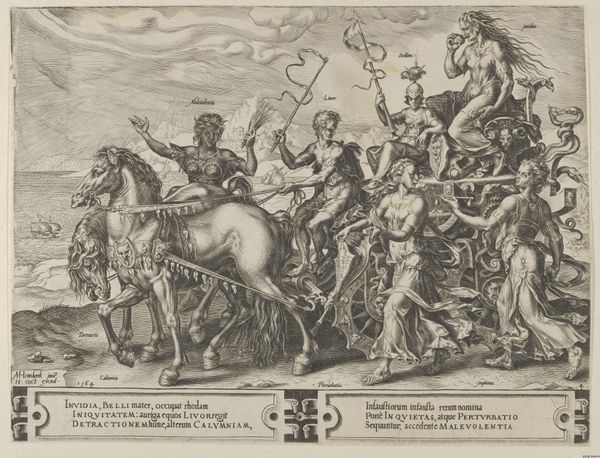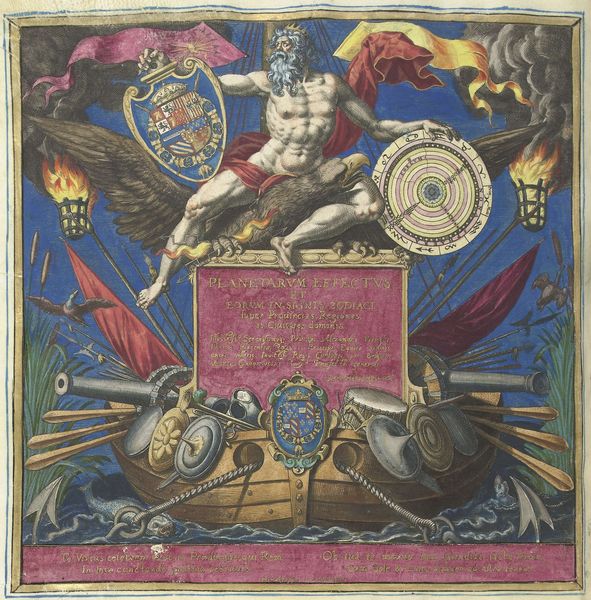
Sheet 9: Julius Caesar in his horse-drawn chariot, from "The Triumph of Julius Caesar" 1599
0:00
0:00
drawing, print, ink, engraving
#
drawing
#
water colours
#
allegory
# print
#
landscape
#
ink
#
horse
#
men
#
history-painting
#
italian-renaissance
#
engraving
Dimensions: Sheet: 14 7/8 × 14 1/2 in. (37.8 × 36.8 cm)
Copyright: Public Domain
Curator: So here we have, from the Met’s collection, Andrea Andreani’s striking print, "Sheet 9: Julius Caesar in his horse-drawn chariot, from 'The Triumph of Julius Caesar'", created back in 1599. Editor: Wow. It bursts with life! The color palette – pale blues, dusty pinks, earthy greens – it’s surprisingly… whimsical. The way all those figures are crammed together, it feels less like a stately triumph and more like a glorious, slightly chaotic street festival. Curator: Indeed. Andreani used a chiaroscuro woodcut technique, layering different blocks to create these tonal variations. It’s fascinating how he adapted that method to create a print that suggests a very grand pageant or parade. What's striking about it is that Andreani, rather than creating his own design, printed the designs of Andrea Mantegna. Editor: Tell me more about these materials and production? It looks very skilled. This kind of multiple block printing would take a high level of technical understanding of carving the blocks in relief and inking, not to mention an appreciation for the paper and the printing press. It's almost as if each print run becomes a performance. Curator: Absolutely. Think about the social context, too. These kinds of prints were relatively accessible; cheaper than paintings and more easily disseminated. This image would have carried Mantegna's original vision to a far wider audience. So, what does that accessibility mean? Did it democratize access to these historical narratives, or was it more about cementing the power of classical imagery in the cultural consciousness? Editor: I see what you mean about the power, this grand procession freezes into a potent symbol of might, which is pretty heavy when you think about how this thing would have circulated in early modern Europe. It becomes less about what the object depicts and more about its afterlife, the conditions by which this imagery keeps existing as it travels around society. That's so intriguing. I find that thought even more compelling than Julius Caesar and his fancy ride. Curator: That’s such an intriguing lens. Thank you for sharing your thoughts! Editor: Thank you.
Comments
No comments
Be the first to comment and join the conversation on the ultimate creative platform.
